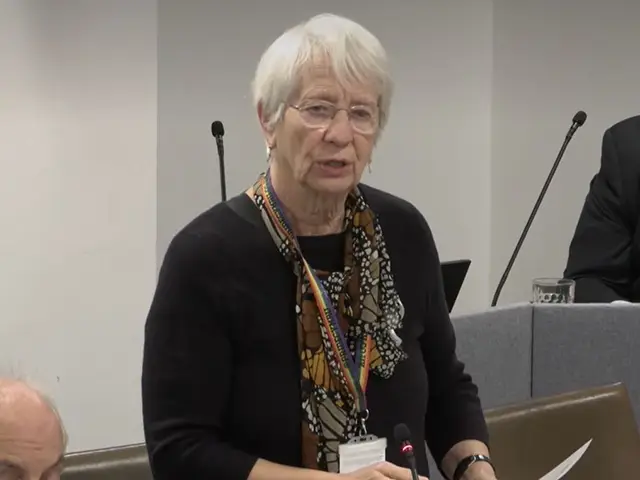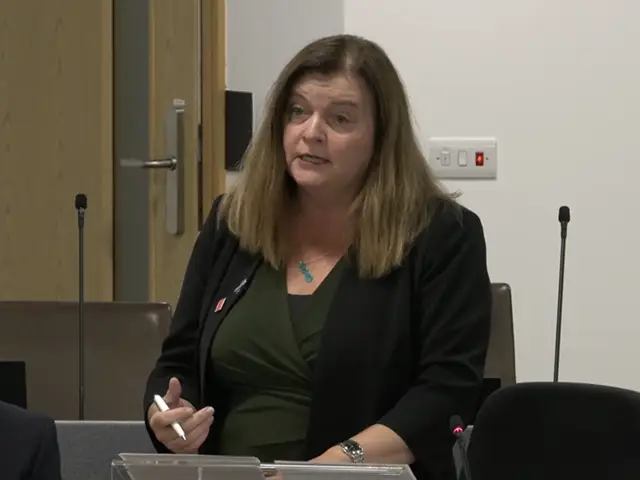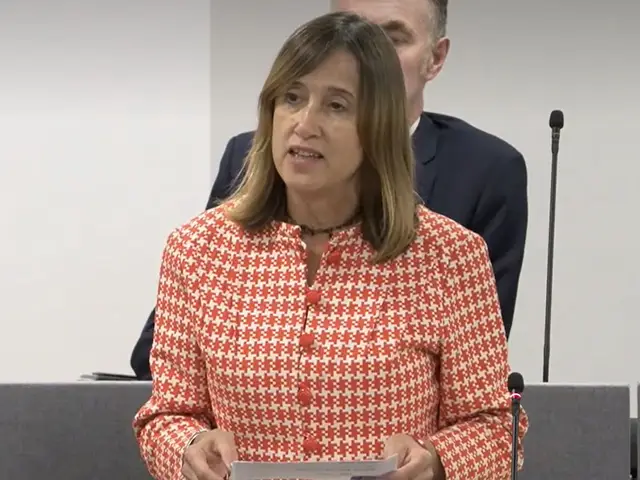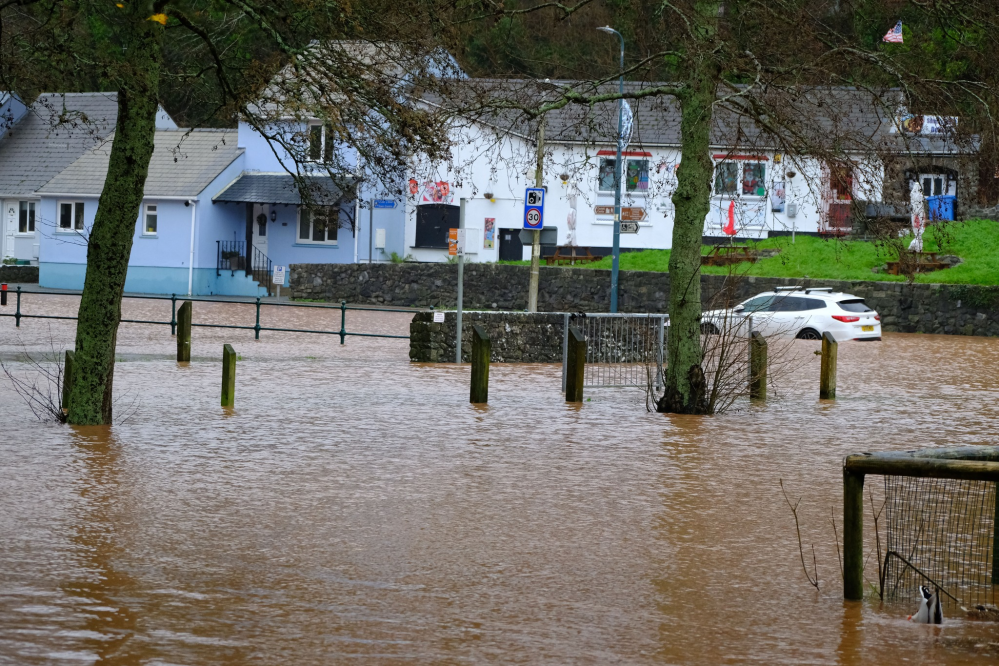Community
The Science Behind Effective Weight Loss: Understanding Metabolism and Caloric Deficit

This article introduces fundamental ideas about metabolism and caloric deficits. It shows how crucial it is to understand these ideas when creating weight loss strategies so that intake and expenditure of calories are balanced.
Basal Metabolic Rate
Knowing your BMR is integral to successful weight loss, as it acts as a starting point for the minimum caloric intake required to support vital bodily functions. It makes up for 60–75% of our energy expenditure, with factors including age, sex, body composition, and genetics all having an effect. Muscle tissue typically expends more calories at rest than fat tissue, so those with higher muscle mass tend to have a higher BMR. In case you need advice from a specialist, check out life md reviews about the convenient telehealth service!
Thermic Effect of Food
TEF is the energy needed for digesting, absorbing, and metabolizing nutrients in our food. It makes up approximately 10–20% of our overall energy budget. Protein typically has greater thermic effects than fats or carbs, and consuming more protein can help with weight reduction by slightly increasing total calorie burn.
Caloric Deficit Is Key for Weight Loss
A calorie deficit occurs when calories consumed are less than those burned; as a result, weight loss occurs due to your body utilizing its stores of fat for fuel instead. A caloric deficit may occur by either cutting back on calorie consumption, increasing physical activity, or both simultaneously; either method could create one. However, doing either requires knowledge and expertise to be effective.
Physical Activity’s Importance for Good Health
Exercise has an immense effect on weight reduction and energy expenditure. It includes scheduled physical activities like weightlifting or jogging as well as non-exercise activity thermogenesis (NEAT) such as walking, fidgeting, and housework. Each form contributes to creating a caloric deficit through increased caloric expenditure; regular exercise also boosts general well-being, builds muscular mass, improves metabolic health, and may boost general well-being overall.
Calculating Caloric Needs
To establish a caloric deficit, you must ascertain your daily caloric requirements. You can do this by computing your TEE (total energy expenditure comprising TEF, BMR, and physical activity levels). Your BMR may be estimated using various online calculators or formulae, such as Mifflin-St Jeor and Harris-Benedict equations, depending on age, sex, weight, and height variables; then multiply that BMR number with an activity factor to get your TEE estimate.
Implement a Caloric Deficit Diet
Dieting to lose weight means eating fewer calories than your TEE; creating a caloric deficit and producing weight loss requires eating fewer than your TEE on an ongoing basis, with an ideal caloric deficit being between 500-1 kcal per day, which equates to 1 to 2 pounds each week if maintained over a healthy and sustainable timeframe. Reducing portion sizes, selecting lower-cal meals, and limiting high-calorie items like soda pop or other processed snacks such as candy will all help contribute toward this process, while burning additional calories through physical activity may also add calories directly towards producing this goal.
Balance Macronutrients
While calorie consumption and expenditure are the cornerstones of weight reduction, food composition also matters. Achieving optimal health requires maintaining balance among three macronutrients, protein, carbs, and fats, to facilitate weight loss and general well-being. Protein provides increased satiety, has more excellent TEF rates, and helps preserve muscle mass during weight loss, while healthy fats provide a hormonal synthesis for cell health and energy for physical activity and cognitive performance; carbohydrates supply energy for physical activity and cognitive performance. A diet full of nutritious-dense foods will promote long-term health and assist in weight loss efforts!
Monitor Progress and Adjust Strategies
Sustaining weight reduction involves constant observation and strategy modification. One effective way to stay accountable and identify areas for improvement is to keep track of food consumption, exercise routines, and progress using devices like wearable activity trackers, smartphone applications, or food diaries. Being adaptable is also key here—adapt your exercise or caloric intake according to changes in lifestyle objectives or progress made towards your weight reduction journey.
Sustainable Practices Are Essential
Long-term weight loss requires adopting sustainable behaviors. Though they may be difficult to sustain and may result in weight regain, extreme diets and vigorous exercise routines can provide quick weight reduction. However, lasting outcomes are more likely with an approach focused on overall health, realistic objectives, progressive dietary and physical activity improvements, and psychological and emotional aspects related to eating habits and body image. Addressing such matters may foster more positive associations with food, resulting in long-term weight management.
Conclusion: Weight Loss Science
Understanding metabolism and caloric deficit is integral for successful weight loss. Achieve lasting weight reduction through BMR, physical activity, TEF, and macronutrient balance strategies. It is possible to follow sustainable methods like BMR, physical activity, and TEF balance macronutrient balance. You should monitor progress regularly while creating sustainable routines. People can improve their general health while meeting weight reduction objectives by adopting healthy behaviors combined with scientific methods.
Community
Senedd unanimously backs sign language bill

PLANS to make Wales the best place in the UK for British Sign Language (BSL) users moved a significant step closer to becoming law with the Senedd’s unanimous support.
If ultimately passed, the BSL bill – introduced by the Conservatives’ Mark Isherwood – would end Wales’ status as the only UK nation without specific sign language protections.
Leading a debate on Wednesday December 17, Mr Isherwood said the Senedd supporting the bill’s general principles was a “huge step ahead” for the “vital” legislation.
Mr Isherwood, a disability rights campaigner for decades, explained his backbench bill would introduce legal requirements to promote and facilitate the use of BSL in Wales.
He said the bill, if passed, would be the most progressive piece of BSL legislation anywhere in the UK, recognising BSL is a language in its own right, not a communication support need.

He highlighted that the bill would establish a BSL adviser role, the first statutory post of its kind in the UK, describing its importance as something that “cannot be overstated”.
Mr Isherwood, who chairs cross-party groups on disability and deaf issues, told the Senedd: “This isn’t just my bill. This is the bill of the BSL community. Let’s make this happen together and be proud of it together on behalf of deaf people across Wales.”
Jenny Rathbone, the Labour chair of the Senedd’s equality committee, was convinced of the “overdue” need for legislation to give more standing to British Sign Language.

Ms Rathbone said the committee heard the biggest barrier “by some margin” was the availability of interpreters and the sustainability of the workforce.
She quoted a signer who told the committee: “The bill would make us feel respected and valued. But without proper funding, planning and deaf-led leadership, it won’t go far enough.”
Sioned Williams, Plaid Cymru’s shadow social justice secretary, told Senedd members: “Language is a part of our identity, our culture and our personal dignity.
“When someone cannot use their language, they are excluded from education, health care, employment and public life – and that is not acceptable in today’s Wales.”

Ms Williams warned that if the legislation fails to deliver real change, the deaf community would be left “angry, disappointed and very, very disheartened”.
She expressed concern that the bill does not legally require the BSL adviser to be a deaf person, arguing it is “not appropriate, possible or efficient” for non-signers to lead the way.
Mr Isherwood defended the decision not to require that the adviser must be deaf, warning a successful legal challenge to a single such provision could cause the entire bill to fail.
Welsh Liberal Democrat leader Jane Dodds warned of an immediate workforce crisis, with only 54 registered sign language interpreters in Wales as of July.
With many now approaching the end of their working lives, she said: “We cannot – we must not – allow this bill to fail because we didn’t have the foresight to address this crisis now.”
Support for the bill stretched across the political spectrum, with Reform UK’s Laura Anne Jones similarly welcoming the “long-overdue” and “vital” legislation.
Jane Hutt, Wales’ social justice secretary, confirmed the Welsh Government’s financial backing, committing £214,300 for the bill’s first year of implementation in 2026/27.
If it clears the final hurdles, Mr Isherwood’s proposal will be the first backbench bill to enter the statute book in about a decade following the Nurse Staffing Levels (Wales) Act 2016.
Community
‘Nowhere I can play’: Disabled children excluded from Welsh parks

NEARLY four in ten disabled children in Wales “never or hardly ever” play outside due to a “heartbreaking” lack of accessible parks, politicians have warned.
Rhys ab Owen, an independent, described the situation as “disgraceful” as he cited a Play Wales report showing 37% of disabled children are effectively shut out of playgrounds.
Leading a debate in the Senedd on Wednesday December 17, he read the testimony of a ten-year-old boy from Blaenau Gwent who said: “Nowhere disabled friendly – parks haven’t got disabled friendly equipment, so I can’t play.”
Mr ab Owen warned: “There shouldn’t be any discrimination… disabled children do face much greater problems in terms of park maintenance, and with accessibility and inclusion.”
He shared the experience of a 13-year-old girl from Newport who told researchers: “There’s nowhere I can play or hang out safely by myself as I use a frame to help me walk.”
The former barrister warned budget cuts were leading to a managed decline in standards, quoting a 13-year-old from Caerphilly who said: “Due to anti-social behaviour our equipment gets broken, burnt and vandalised and is then not replaced.”
The Conservatives’ Natasha Asghar was stunned by the scale of the crisis and revealed that only 11% of playgrounds in Wales are rated “green”, meaning they are fully accessible. By contrast, almost half are rated “red” for poor accessibility.

Listing the barriers families face, Ms Asghar highlighted that 30% of sites lack accessible paths and nearly one in five have gates too narrow for wheelchairs. “Those are just two of the barriers preventing disabled children from accessing play,” she said.
Jane Dodds, the leader of the Liberal Democrats in Wales, argued the shocking statistics should be a wake-up call for Senedd politicians.
“To hear that 37% of disabled children in Wales say they never or hardly ever play outside should be a figure to stop us all in our tracks,” she said.

Meanwhile, Mike Hedges pointed out that Wales became the first country in the world to put a duty on councils to secure “sufficient play opportunities” for children in 2010.
And Julie Morgan, a fellow Labour backbencher, celebrated Cardiff becoming the UK’s first Unicef-accredited child-friendly city in 2023.
Dawn Bowden, the minister for children, pointed to £5m to improve playgrounds this year but she too was “disappointed” by play satisfaction figures falling from 84% to 71% since 2019.

She said the Welsh Government has provided a “toolkit” to Wales’ 22 councils, “ensuring a holistic outcome-focused approach” to inclusive and accessible play.
The cross-party motion, which called for play to be protected from cuts – as well as improved access for disabled children – was agreed unanimously but does not bind ministers.
Climate
Pembroke tidal flood defence work to continue to January

SIGNIFICANT issues with a part of Pembroke’s tidal barrage are not expected to be fully fixed before late January, councillors heard.
Pembroke councillors Aaron Carey and Jonathan Grimes submitted an urgent question heard at the December meeting of Pembrokeshire County Council, which said: “In light of the repeated flooding events across the county – including the recent overflow at Castle Pond and the acknowledgement by your own Coastal, Rivers & Drainage Team that the barrage tipping gate remains inoperable until mid-January can you explain what assessment has been made of the adequacy of our tidal outfall infrastructure in the face of current and projected future storm surges and sea-level rise?
“If no such assessment has yet been undertaken, will you commit now to commissioning an immediate structural and risk-capacity audit, with a report to full council within three months, and with proposals for funding any remedial works required — to avoid recurring damage and disruption to residents, highways, and public amenities?”
Responding to the urgent question, Cabinet Member for Residents Services Cllr Rhys Sinnett said a significant assessment of the Pembroke Tidal Barrage had already been undertaken over the past two years, with regular inspections.
He said “a comprehensive package of works” began in September which were due to be completed before Christmas but said there had been “significant issues” with the tipping gate hydraulic ram, with a significant overhaul now taking place, with reinstatement expected by late January.
He told members additional mitigation measures were now in place and, once works are completed, enhanced works will provide improved resilience and “long-term reliability,” with further reports due to come to Cabinet.
Cllr Carey and Cllr Grimes had also submitted a notice of motion saying: “That this council notes with concern the repeated and increasingly severe flooding experienced in our coastal, estuarial and river-fringe communities over recent weeks — in particular the flooding events affecting the Commons/Castle Pond area.
“That the council further notes that, according to correspondence from the Coastal, Rivers & Drainage Team Manager, the tipping gate at the barrage remains out of operation until mid-January due to mechanical issues; meanwhile high tide, heavy rain, wind-driven tidal surges and overspill at the sluice have combined to overwhelm the drainage/outfall infrastructure.
“That we recognise the current maintenance schedule (delayed ‘til after the summer season) and the justification given — but further that such planning failed to foresee the likelihood of severe winter storm and surge events, which climate change makes more frequent and more intense.
“That this council therefore calls on the Cabinet to commission an urgent review of:
- The adequacy of the current drainage/outfall and tidal-sluice infrastructure (barrage tipping gate, sluice/sluice-valve, flap valve, outfall capacity) for current and projected climate/tide conditions.
- The maintenance scheduling policy for coastal and estuarial flood-risk assets, with a view to ensuring critical maintenance is completed before winter high-tide / storm-surge season, rather than — as at present — being delayed until after summer for ‘recreational / biodiversity’ reasons.
“That, pending the outcome of the review, the council should allocate appropriate emergency capital funding to remediate the barrages / sluices / outfalls at risk of failure or blockage — to safeguard residents, properties, highways and public amenities from further flooding.
“That, further, this council resolves to publish a public flood-resilience plan for the county, identifying all coastal and river-fringe ‘hotspots,’ maintenance schedules, responsible teams, and a transparent timeline for upgrades or remedial works — so residents have clarity and confidence in flood prevention measures.”
The notice of motion itself will be considered by the council’s Cabinet at a later date.
-

 Crime1 day ago
Crime1 day agoMilford Haven man jailed after drunken attack on partner and police officers
-

 News4 days ago
News4 days agoDyfed-Powys Police launch major investigation after triple fatal crash
-

 Crime1 day ago
Crime1 day agoTeenager charged following rape allegation at Saundersfoot nightclub
-

 Crime3 days ago
Crime3 days agoMan sent to Crown Court over historic indecent assault allegations
-

 Crime2 days ago
Crime2 days agoMan charged with months of coercive control and assaults
-

 Crime5 days ago
Crime5 days agoMan spared jail after baseball bat incident in Milford Haven
-

 Crime3 days ago
Crime3 days agoMilford Haven man admits multiple offences after A477 incident
-

 Crime2 days ago
Crime2 days agoWoman ‘terrified in own home’ after ex breaches court order













